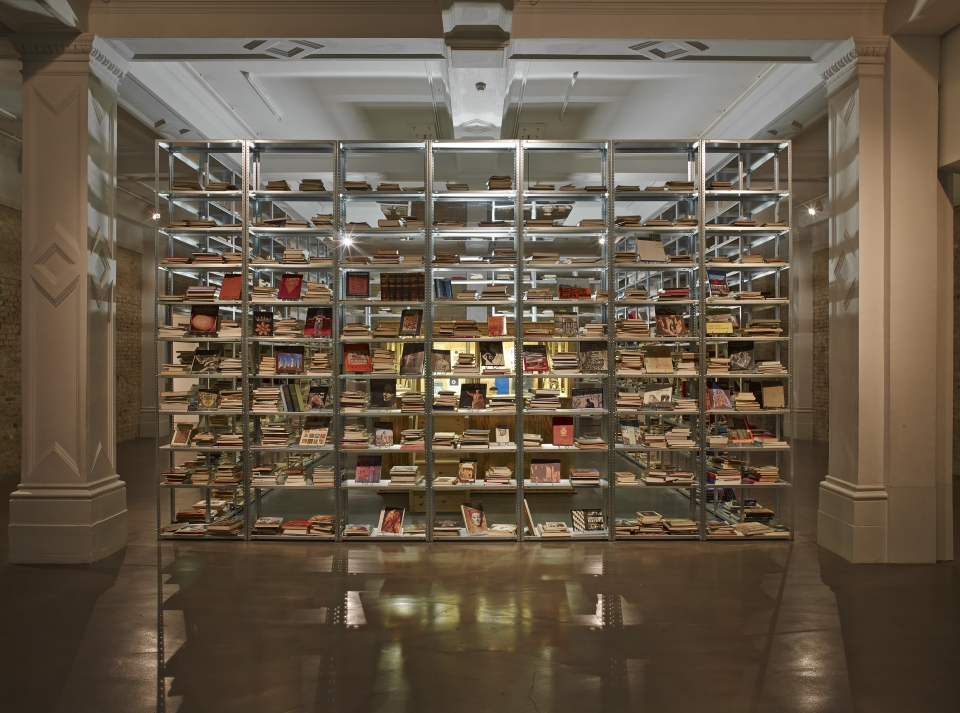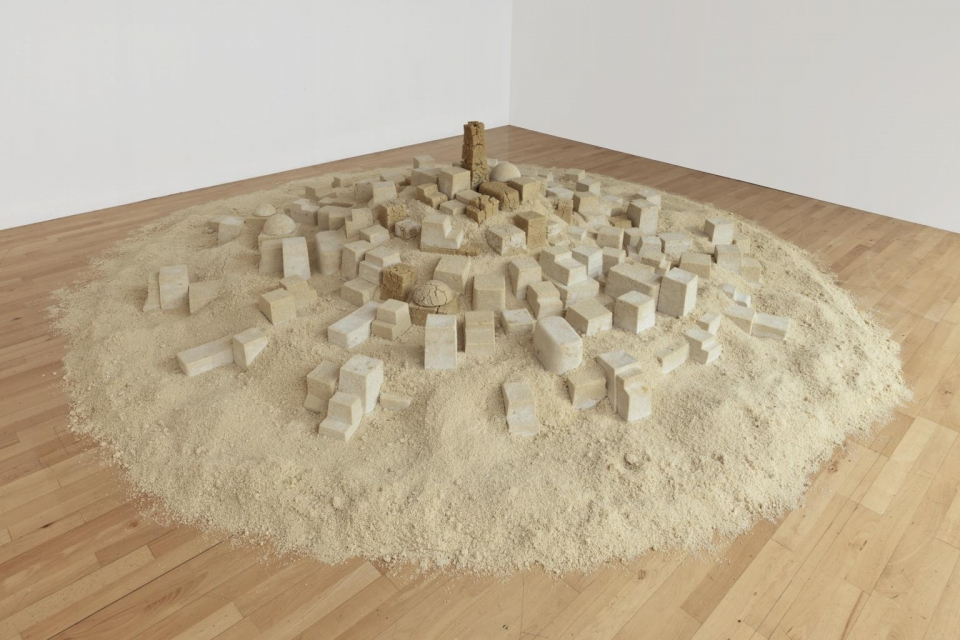Kader Attia built a model of an Algerian fortress out of couscous in the Guggenheim.
The M’zab Valley, deep in the Algerian Sahara, is renowned for its architecture—curvy white structures built a thousand years ago from sand and clay. On a recent sunny morning, the artist Kader Attia set out to create a model of the M’zab hilltop fortress Ghardaïa for an exhibition at the Guggenheim Museum. Standing in for the adobe of the original was another ancient North African invention: couscous—around seven hundred and seventy pounds of it. The fourth-floor gallery where Attia and a brigade of art handlers worked was enclosed with plastic sheeting, like a construction site ....
.... Attia’s piece, “Untitled (Ghardaïa),” is part of an exhibition called “But a Storm Is Blowing from Paradise: Contemporary Art of the Middle East and North Africa.” He chose couscous as his medium because the dish is more than a thousand years old, predating the Arabs and modern Europeans who invaded the region, and because it transcends religion, serving as a staple not only in Muslim homes but at the Shabbat dinners of North African Jews. Couscous also bears a nifty resemblance to sand, and the work-in-progress could have passed for an elaborate sandcastle. At the center of a circular platform rose a yellowish minaret, surrounded by squat houses with sloping walls, rounded parapets, and roofs topped by domes. Attia said he was amazed to learn that Le Corbusier visited Ghardaïa in the nineteen-thirties and was captivated by its minimalism and its community-oriented urban plan, lessons that he and his fellow-modernist Fernand Pouillon applied to the apartment blocks they later built in France, which now house North African immigrants. Attia calls his piece a “postmortem dinner” for the architects, chiding them for appropriating North Africa’s aesthetic without giving credit. “Everyone knows that Braque and Picasso were strongly influenced by the tribal, primitive art of Africa,” he said. “This never happened in architecture. We don’t know the influence of traditional architecture on architects like Le Corbusier.” ....


